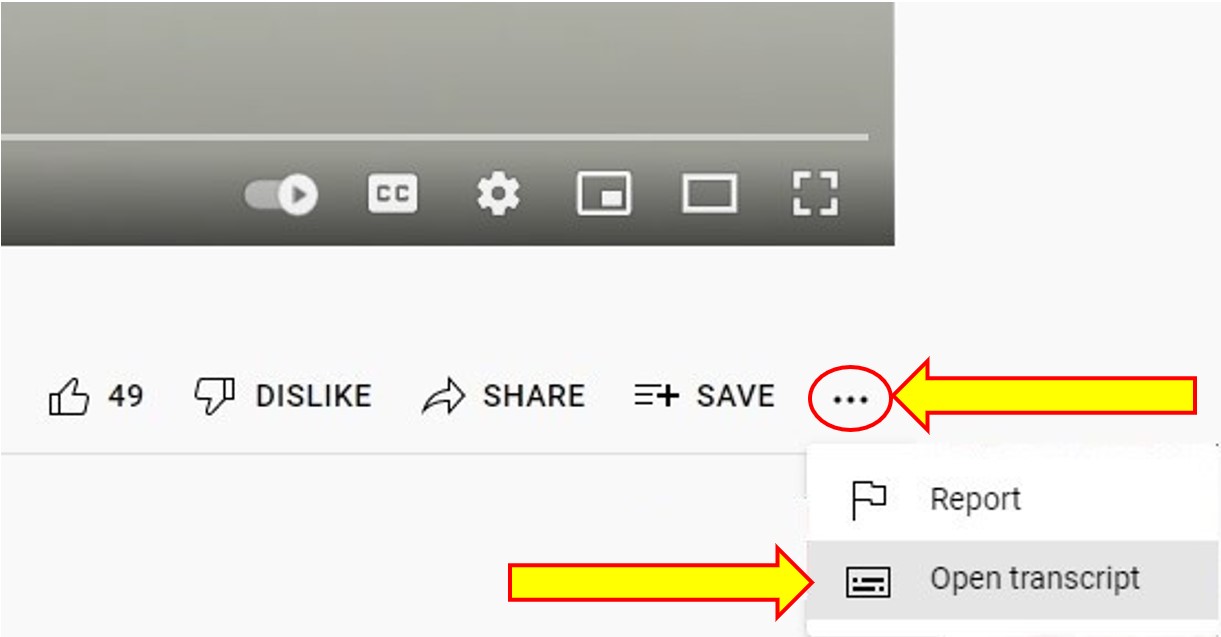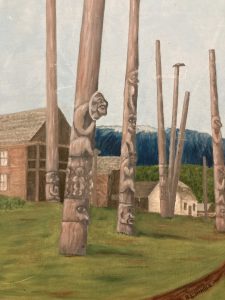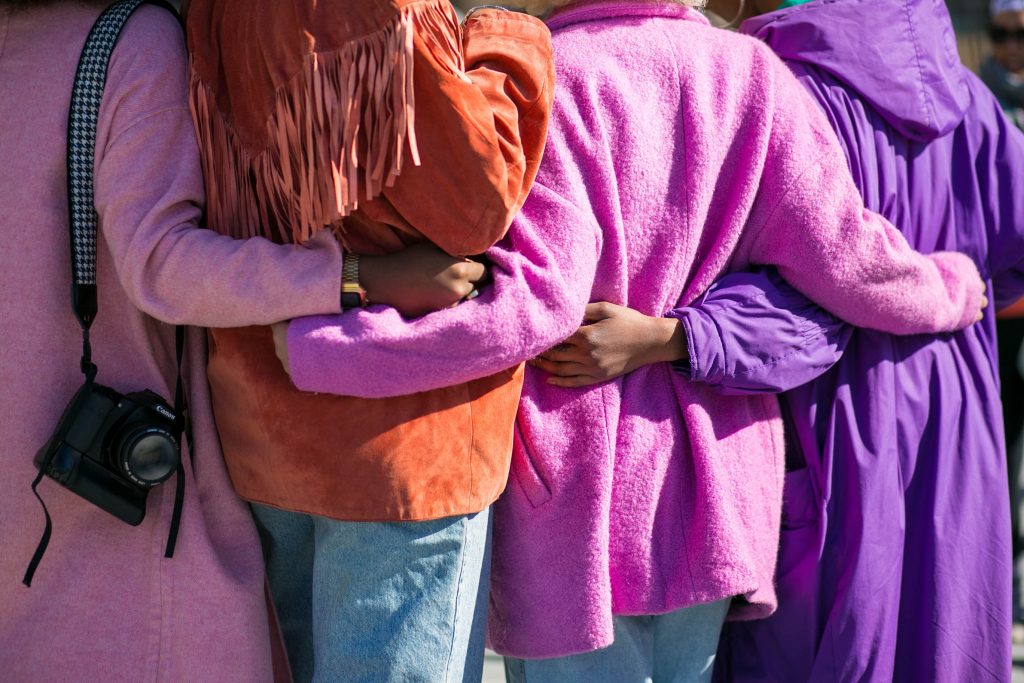3.8 Trauma Informed for Incarcerated

When we look at Trauma Informed for Incarcerated we need to be aware that this is the only initiative designed to challenge the culture of the justice system and the prison service. The goal/aim of this is about improving the support for prisoners and staff. There are many layers of standard practices (searches, seclusion, restraint) that create trauma or re-traumatize many.
Trauma-informed care in prisons does require looking at many changes such as organizational policies and practices and they pose a serious threat to an individual and can re-traumatize or trigger traumatic memories.
We’ve all got a big story “Experiences of a trauma informed intervention in prison”
Transcript
To Access the Video Transcript:
1. Click on “YouTube” on the bottom-right of the video. This will take you directly to the YouTube video.
2. Click on the More Actions icon (represented by three horizontal dots)
3. Click on “Open Transcript”

For more information:
- Trauma Informed Work with people with contact with the criminal justice system
- An Experimental Study of the Effectiveness of a Trauma- Specific Intervention for Incarcerated Men
- MENTAL HEALTH AND CRIMINAL JUSTICE POLICY – CAMH
- Canada’s State of the Criminal Justice System – Government of Canada
- The Safe Return of Offenders to the Community Statistical Overview April 2005
- Outcomes of Trauma-Informed Interventions for Incarcerated Women: A Review
Drug Treatment Court – CAMH

An intervention model combining drug addiction treatment with supervision of a “problem-solving” court, as an alternative to incarceration for individuals facing charges from non-violent criminal activities related to substance abuse.
This program is meant for individuals facing charges from substance abuse related non-violent criminal activities. Those who are interested can self-refer (voluntary) through their lawyer and/or duty counsel. The DTC Crown attorney screens all applicants for eligibility.
Program is a structured outpatient program offering programs such as: random urine screens, frequent court appears, thorough assessments, extensive case management services and addressing social determinants of health and social reintegration. Program lasts minimum 1 year, upon successful completion of the program will receive a non-custodial sentence, rather than incarceration.
The DTC is a partnership between CAMH, the Ontario Court of Justice, the Ministry of the Attorney General and many community agencies.
There are many DTC across Canada.
For more information on Drug Treatment Court:
- CAMH Drug Treatment Court Services
- Beyond recidivism: changes in health and social service involvement following exposure to drug treatment court
- Steps to Justice – how to Participate in Drug Treatment Court
- Drug Treatment Court – CCSA / CCLAT
- Drug Treatment Court – Man missing who was active in Program
- Drug Treatment Court of Vancouver (BC)
- Calgary Drug Treatment Court
- Drug Treatment Court – Newfoundland & Labrador
- Drug Treatment Court – Saskatchewan
- Drug Treatment Courts – United Nations Office of Drug & Crime
- Drug Treatment Courts – Canadian Bar Association – Alberta – Supports
- CBC – Alberta man says ‘drug treatment court’ pulled him out of life of addiction and crime
- Mr. Justice Kofi Barnes – People, Places and Things: Inspirational Voices from Canada’s Drug Treatment Courts (Book)
Gladue Court (Indigenous People’s Court)

A Gladue report is a written document that weaves together your story with information from interviews with family, Elders, and community members. It can also include relevant documentation to support the judge in making an appropriate decision.Gladue Court is a special court for people charged with a crime and who self-identify as Indigenous, Métis, First Nations, or Inuit. Gladue Court is also called Indigenous Peoples Court.
Gladue Courts deal with all criminal offences. Usually they only handle bail hearings and sentencing hearings. Gladue Courts don’t handle trials or preliminary hearings.
Gladue Courts are Canadian courts that apply Canadian law. They often try to incorporate Indigenous cultural practices and understandings of justice. For example, a Gladue Court might start with a smudging ceremony or have Elders or Knowledge Keepers start with a song or prayer.
Some courthouses have only one day or a few days that Gladue Court is available each week. But every court must apply the Gladue principles even if it’s not a Gladue Court.
Gladue principles
Even if you’re not in a Gladue Court, the Gladue principles apply.
Gladue principles require all courts to take into account:
- your Indigenous background, and
- the impact and history of discrimination against Indigenous people by Canada and the criminal justice system, also called systemic discrimination.
This means at sentencing hearings, all alternatives to jail must be considered before a jail sentence is given. Jail is a last resort. And when a jail sentence is given, the court must apply Gladue principles to the length of the sentence.
And in Ontario, at bail hearings, all types of releases must be considered. Detention, or holding an accused without bail, is a last resort.
With your permission, your lawyer will tell the court about your Indigenous identity. Your background information is sometimes called Gladue factors. Your lawyer must also make arguments, called Gladue submissions, based on how the Gladue principles apply to your case.
Courthouses might have different practices in their Gladue Court. Speak to your lawyer, duty counsel, or an Indigenous court worker to find out more.
Participants from eight jurisdictions (Alberta, British Columbia, Nova Scotia, Nunavut, Ontario, Saskatchewan, Yukon, and Northwest Territories) stated that there was at least one specialized court for Aboriginal accused/offenders in their jurisdiction that satisfies the criteria established by the researchers.
For More Information on Gladue Courts
Elizabeth Fry Society

Figure 3.8.4 – Photo by Vonecia Carswell on Unsplash
Operates regionally in communities throughout Canada and nationally through the Canadian Association of Elizabeth Fry Societies. Each regional society is self-governing. Twenty-four affiliate societies exist in cities across Canada. They assist some of the most vulnerable populations – women, girls and children at risk, involved in or affected by the Justice System. The goal is through advocating, education and support to break the cycle of poverty, addiction, mental illness, homelessness and crime.
John Howard Society

Figure 3.8.5 – Photo by Nicholas Green on Unsplash
Operates regionally in communities throughout Canada and nationally. Currently there are branches and offices in over 60 communities across Canada, provincial offices in all 10 provinces and the Northwest Territories and a national office in Kingston.
Effective, just and humane responses to the causes and consequences of crime.
- works with people who have come into conflict with the law,
- reviews, evaluates and advocates for changes in the criminal justice process,
- engages in public education on matters relating to criminal law and its application
- promotes crime prevention through community and social development activities.
New Initiatives
Incarcerated – Corrections Canada – Education
All Federal and Provincial Institutions offer High School Education. Each Institution runs their education system. Some offer college courses.
Grand Valley Institute for Women – is unique when it comes to post-secondary education in Canada. There are currently about 125 federally-incarcerated post-secondary students in all of Canada and 25 of those are at GVI. Typically they have 20-25% of the post-secondary students in Canada, even though they only have about 1% of the overall offender population. They offer the most substantial program. GVI’s offerings should not be seen as “typical” for incarcerated people but more of a “best practices” situation (based on current funding/technological limitations).
They offer a few print-based correspondent program and University of Ottawa offers correspondence courses through a print/video hybrid model.
“Walls to Bridges (W2B) is an innovative educational program that brings together incarcerated (“Inside”) and non-incarcerated (“Outside”) students to study post-secondary courses in jails and prisons across Canada. The National Hub for the program is based out of the Lyle S. Hallman Faculty of Social Work, in partnership with Grand Valley Institution for Women in Kitchener.
Centennial College for the last 2 years in partnership with Grand Valley Institution for Women has been using an innovative educational program that brings the classroom into GVI by Internet, to work with the incarcerated students to do the Addictions Work Certificate program (5 courses). Many of the women when discharged have continued with the Addictions Work Continuing Education mainstream and completed the certificate course. There have been 15+ graduates complete the Certificate.
Amadeusz work with young people who are incarcerated to create positive change in their lives through access to education, community programs and supports, mentorship and exceptional care. They have 10+ incarcerated students that they work with Centennial College through print-based programs as well when they are no longer incarcerated. These students are in Vanier, Toronto South and Toronto East facilities.
A Canadian Prisoner’s Perspective
Transcript
To Access the Video Transcript:
1. Click on “YouTube” on the bottom-right of the video. This will take you directly to the YouTube video.
2. Click on the More Actions icon (represented by three horizontal dots)
3. Click on “Open Transcript”

Food for thought
New Initiatives – Many programs over the last 3 years, during the Covid pandemic have gone through many changes. Some have expanded, some have closed, some have evolved into something new and some new ones were created in mainstream, but what about those who are incarcerated. Programs have had to look at meeting the changes and delivery of those services, but for those incarcerated it wasn’t that simple.
Reflect on these questions for those who are incarcerated:
- Reflect for a moment on how these COVID impacted those who are incarcerated?
- What is the value/importance of expanding, evolving or creating changes for those who are incarcerated?
- Can you think of any programs that you know of that are offered those who are incarcerated?
- How could you help others understand the changes those who are incarcerated?
- What training is involved in updating skills as a service provider who work with those who are incarcerated?
Gaps in the System

Figure 3.8.6 – Photo by Kristopher Roller on Unsplash
Food for Thought
Gaps in the System – there are many services that are needed and can’t be found. Reflect on these questions. There have many changes over the last 3 years during the Covid pandemic. This has created a lot of changes. Some have expanded, some have closed, some have evolved into something new and some new ones were created. All programs have had to look at meeting the changes and delivery of those services.
Pieces to be aware of:
- Accessibility is the practice of making your programs, websites, support, activities usable by as many people as possible. It is not just about people with disabilities, but the practice of making programs accessible to everyone, online, in person, using mobile devices, or those with slow network connections or no network connections
- Stigma – Refers to the discrediting, devaluing, and shaming of a person because of characteristics or attributes they possess which leads to reluctance to seek help or treatment. – stigma leads to negative social experiences such as isolation, rejection, marginalization, and discrimination. Can affect individuals, families and communities. It can be influenced by cultural and contextual value systems that differ over time and across contexts.
- language – is it offered in many languages. Three types of languages are written, oral and nonverbal.
- culture awareness – able to support cultural awareness – being aware the cultural awareness is the understanding that our own culture differs from one individual and group to the next, and specifically from our target language. Understanding this enables us to communicate more effectively, beyond words and grammar, by understanding their culture.
Our awareness of these GAPS can make the difference between communicating and not communicating.
Street Voices
A social enterprise and media platform with an online directory that provides access to free and subsidized services in the Greater Toronto Area.
The organization was initially established as a magazine in 2014 to empower street-involved and at-risk youth. Over the past six years, the magazine has broadened into a digital media platform that publishes journalistic articles, podcasts, and visuals.
In November 2021, Street Voices expanded from a media platform to include a directory that offers a variety of programs and services throughout the GTA. The website also provides aggregated news of the trending stories.
Ultimately, our aim is to empower marginalized voices, no matter who they are. As we continue to increase our reach as a platform, we hope to expand the directory Canada-wide while telling the stories of our communities.
Amadeusz
Amadeusz offers a variety of programs and supports with a focus on education, community support, research and case management.
The Amadeusz education program supports young people aged 18 to 35 in working towards their educational goals. The goal of this program is to provide young people who are incarcerated with the opportunity, resources, and support to complete their high school education and to explore, prepare for, and attend post-secondary schooling.
For more information on agencies
- Amadeusz – supports young people who are incarcerated to create positive change in their lives through education, community programs and supports
- Oasis – Addiction Recovery and Employment Services
- Street Voices – is a social enterprise and media platform with an online directory that provides access to free and subsidized services to empower street-involved and at-risk youth
Food for thought
New Initiatives – Many programs over the last 3 years, during the Covid pandemic have gone through many changes. Some have expanded, some have closed, some have evolved into something new and some new ones were created. All programs have had to look at meeting the changes and delivery of those services.
Reflect on these changes:
- Reflect for a moment on how these changes impacted the community you work with?
- What is the value of expanding, evolving or creating changes to agencies?
- Can you think of any programs that you know of that have expanded, evolved, changed or closed?
- What are some examples?
- How could you help others understand the changes?
- What training is involved in updating skills as a service provider?Gaps in the System
References
- Figure 3.8.1, 3.8.2, 3.8.3, 3.8.4, 3.8.5, 3.8.6 – Unsplash License
- Amadeusz. (n.d.). Home | Amadeusz. Retrieved August 25, 2022, from https://amadeusz.ca/home/
- CAMH. (n.d.). Drug Treatment Court Services. Retrieved March 20, 2022, from https://www.camh.ca/en/your-care/programs-and-services/drug-treatment-court-services
- Government of Canada – Department of Justice. (2017, February 2). Gladue Practices in the Provinces and Territories. Retrieved March 25, 2020, from https://www.justice.gc.ca/eng/rp-pr/csj-sjc/ccs-ajc/rr12_11/p2.html
- Government of Canada. (2022, July 7). Canada’s State of the Criminal Justice System – 2020 Report: Focus on Women Https://Www.Justice.Gc.ca/Eng/Cj-Jp/State-Etat/Index.Html. Retrieved August 25, 2022, from https://www.justice.gc.ca/eng/cj-jp/state-etat/index.html
- Government of Canada. (2020, July 7). State of the Criminal Justice System Annual Report. Retrieved August 25, 2022, from https://www.justice.gc.ca/eng/cj-jp/state-etat/2021rpt-rap2021/
- Department of Justice Canada. (2021, April 12). 2. Statistical Overview on the Overrepresentation of Indigenous Persons in the Canadian Correctional System and Legislative Reforms to Address the Problem – Spotlight on Gladue: Challenges, Experiences, and Possibilities in Canada’s Criminal Justice System. Retrieved August 25, 2022, from https://www.justice.gc.ca/eng/rp-pr/jr/gladue/p2.html
- Fernwood Publishing. (2017, October 10). Robyn Maynard – Policing Black Lives [Video]. YouTube. https://www.youtube.com/watch?v=1-JpQjhVvlM
- Howard League. (2021, February 15). ’We’ve all got a big story ’ Experiences of a trauma informed intervention in prison. YouTube. Retrieved August 25, 2022, from https://www.youtube.com/watch?v=g3B7odxmmys
- Lehrer, D. (2021). Trauma-Informed Care: The Importance of Understanding the Incarcerated Women. Journal of Correctional Health Care, 27(2), 121–126. https://doi.org/10.1089/jchc.20.07.0060
- Messina, N. P. (2022b). An Experimental Study of the Effectiveness of a Trauma- Specific Intervention for Incarcerated Men. Journal of Interpersonal Violence, 088626052211045. https://doi.org/10.1177/08862605221104526
- Wilfred Laurier. (n.d.). Gladue Principles: Indigenous Peoples and the Canadian Criminal Justice System. Retrieved March 26, 2022, from https://www.wlu.ca/academics/faculties/faculty-of-human-and-social-sciences/centre-for-public-safety-and-well-being/gladue-principles/index.html
- Walls to Bridges. (n.d.). Walls to Bridges. Retrieved March 10, 2022, from https://wallstobridges.ca/

